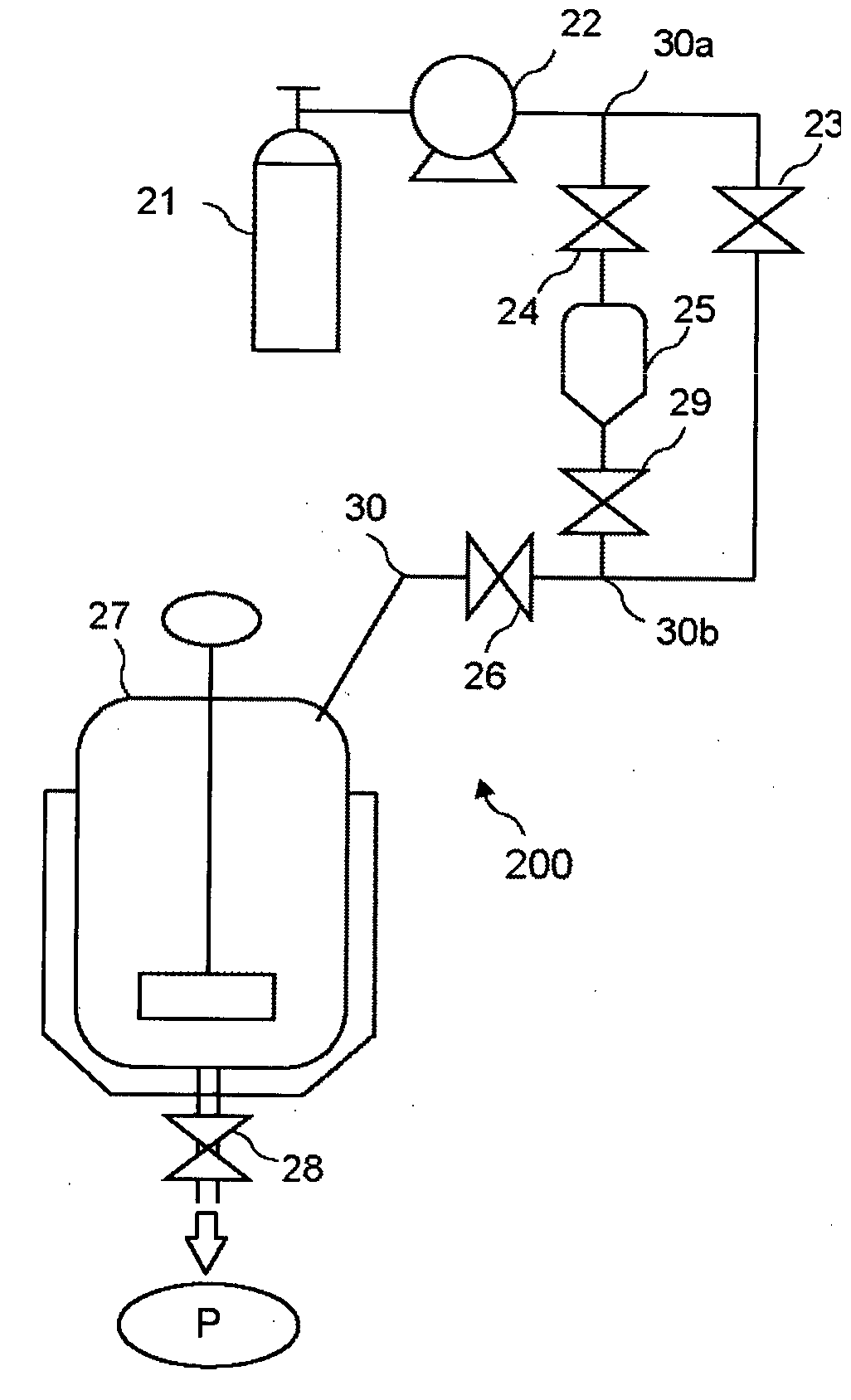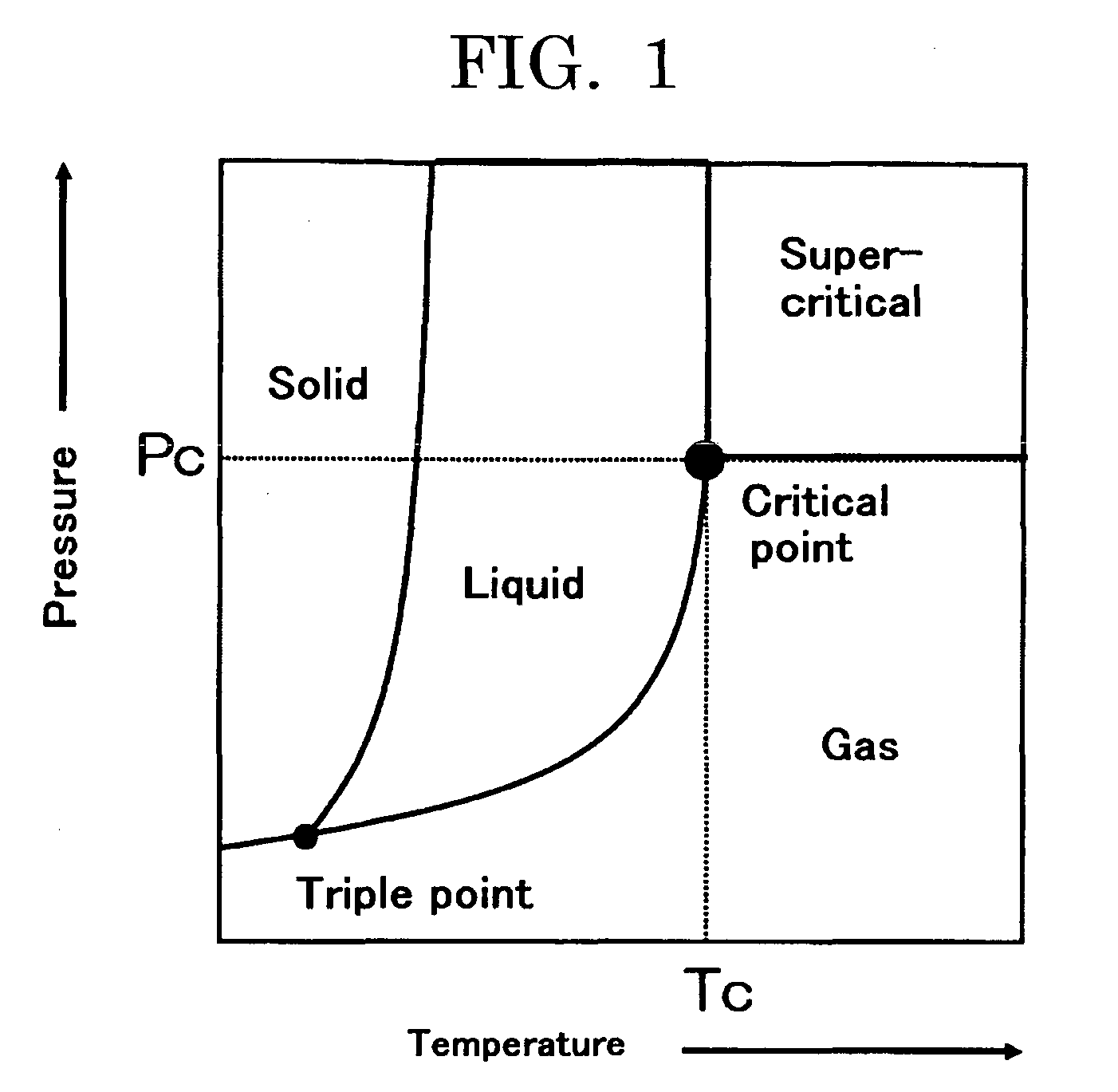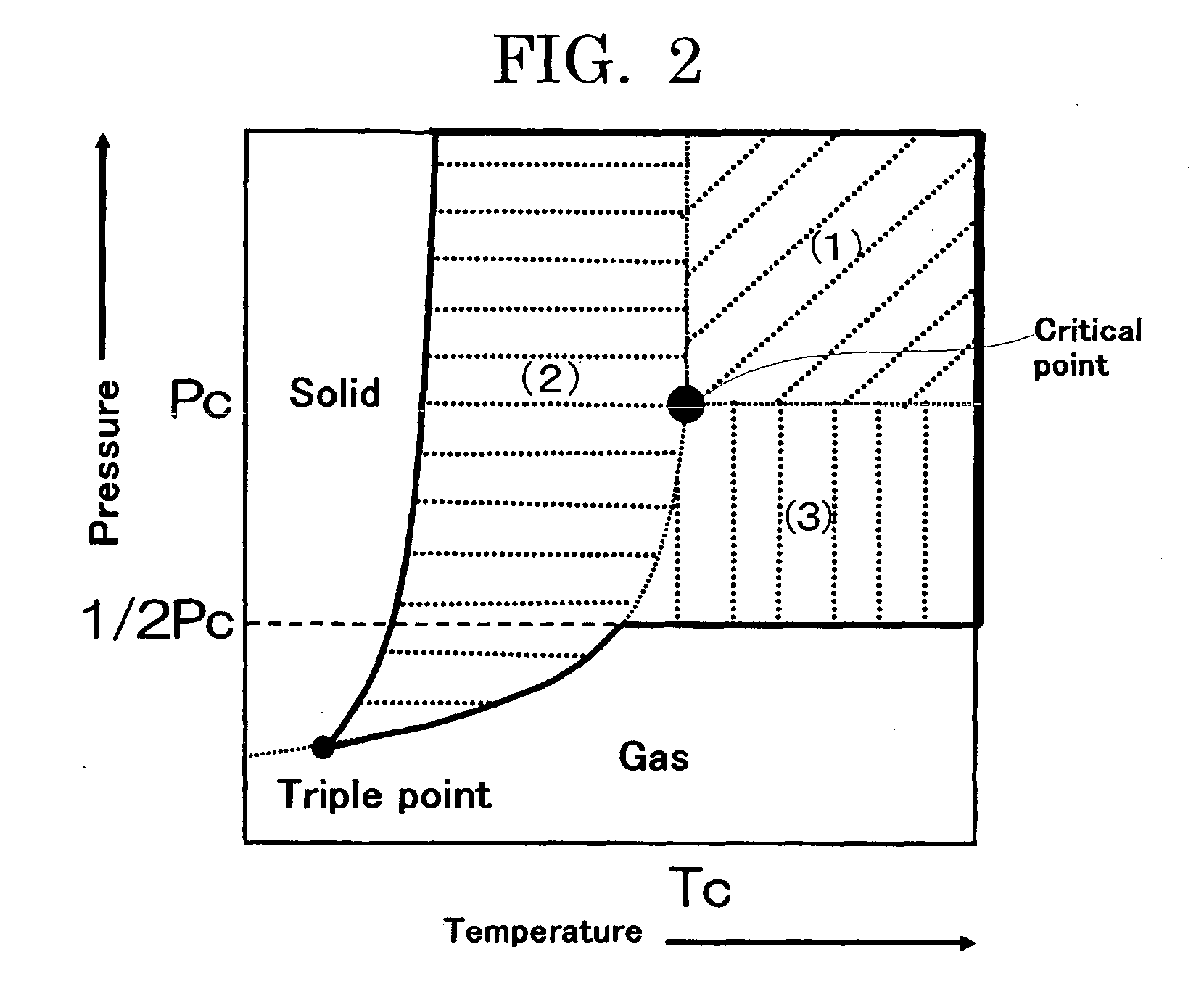Polymer production method, polymer product, particles, film, molded article, and fibers
a technology of polymer product and production method, which is applied in the direction of monocomponent synthetic polymer artificial filament, monocomponent polystyrene artificial filament, textiles and paper, etc., can solve the problem that radical polymerization may not be suitable for use of a polymer product, the molecular weight distribution of an obtained polymer product becomes broad, and the reaction heat generation is large, so as to achieve the effect of easy progressing the polymerization reaction
- Summary
- Abstract
- Description
- Claims
- Application Information
AI Technical Summary
Benefits of technology
Problems solved by technology
Method used
Image
Examples
example 1
[0100]Polymerization of methyl methacrylate (MMA) was performed by means of the polymerization reaction device 200 of FIG. 3. Note that, a ¼-inch SUS316 pipe was sandwiched with valves (24, 29), and was used as an addition pot 25. The addition pot 25 was charged with tin 2-ethylhexanoate (0.02 mL, 0.05 mmol) as a reducing agent in advance.
[0101]To the reaction vessel 27, cupric chloride (70.0 mg, 0.5 mmol) as a catalyst, tris[2-(dimethylamino)ethyl]amine (manufactured by Sigma-Aldrich Co., LLC.)(0.244 g, 1.10 mmol) as a ligand for an ATRP catalyst, and ethyl 2-bromoisobutyrate (0.45 g, 0.0024 mol) as an ATRP initiator were added. Methyl methacrylate (MMA) (50.0 mL, 0.47 mol), from which a polymerization inhibitor had been removed through an alumina column, was added to the reaction vessel 27 in a manner that a molar ratio of the monomer to the initiator was to be 2,000 / 1.
[0102]The metering pump 22 was operated, and the valves (23, 26) were released to supply carbon dioxide stored in...
examples 2 to 5
[0103]Polymers of Examples 2 to 5 were each obtained in the same manner as in Example 1, provided that the initiator was replaced with an equimolecular amount of the following bifunctional initiator (Example 2), trifunctional initiator (Example 3), tetrafunctional initiator (Example 4), or hexafunctional initiator (Example 5). The physical properties of the obtained polymers measured by the aforementioned methods are presented in Table 1.
examples 6 to 9
[0104]Polymers of Examples 6 to 9 were each obtained in the same manner as in Example 1, provided that the reaction temperature and the reaction pressure were changed as depicted in the columns of Examples 6 to 9 in Table 2, respectively. The physical properties of the obtained polymers measured by the aforementioned methods are presented in Table 2.
PUM
| Property | Measurement | Unit |
|---|---|---|
| Fraction | aaaaa | aaaaa |
| Percent by mass | aaaaa | aaaaa |
| Percent by mass | aaaaa | aaaaa |
Abstract
Description
Claims
Application Information
 Login to View More
Login to View More - R&D
- Intellectual Property
- Life Sciences
- Materials
- Tech Scout
- Unparalleled Data Quality
- Higher Quality Content
- 60% Fewer Hallucinations
Browse by: Latest US Patents, China's latest patents, Technical Efficacy Thesaurus, Application Domain, Technology Topic, Popular Technical Reports.
© 2025 PatSnap. All rights reserved.Legal|Privacy policy|Modern Slavery Act Transparency Statement|Sitemap|About US| Contact US: help@patsnap.com



